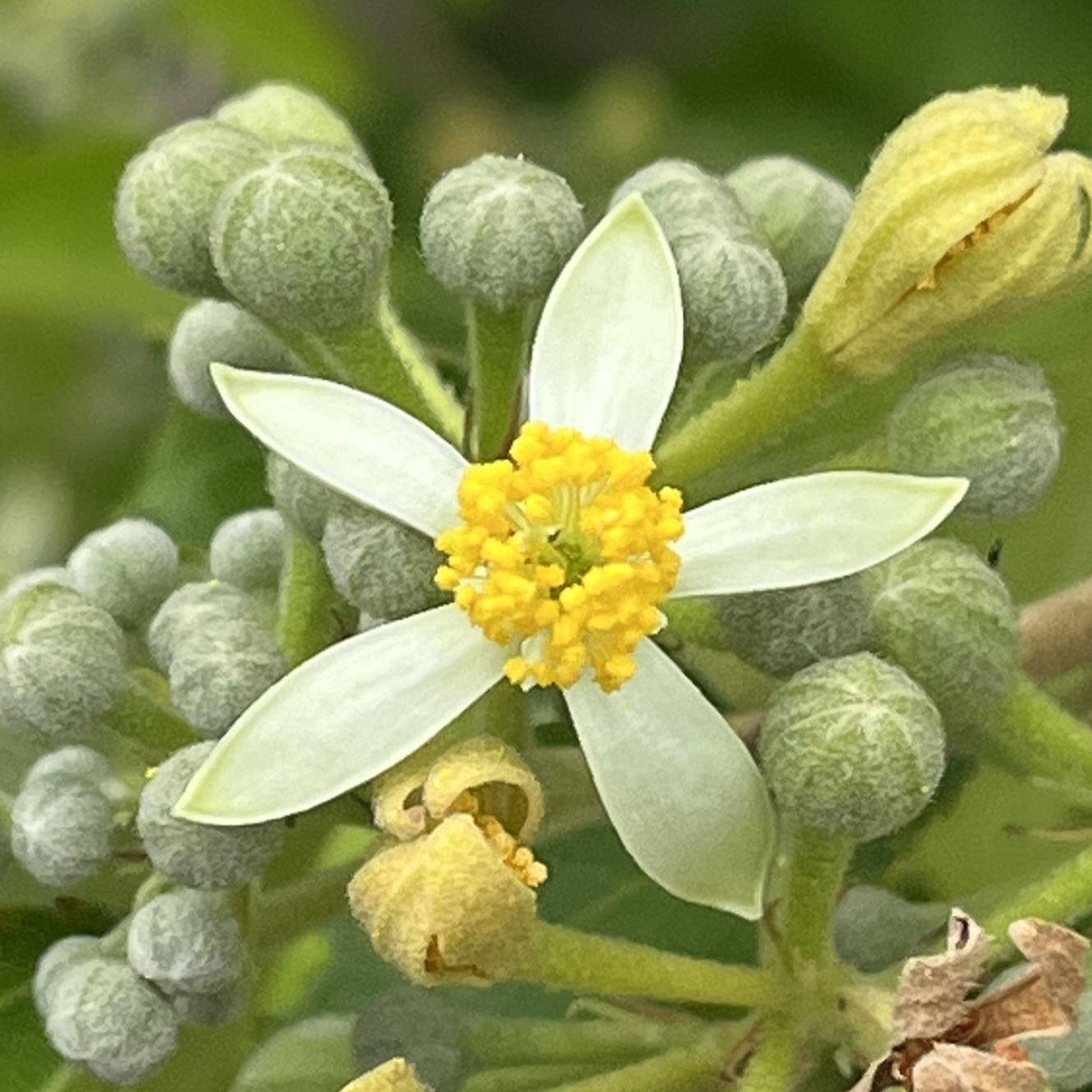エノキウツギの和名の由来は葉の形が「榎」に、樹の姿が「卯木」に似ているから。夏に白色の花が咲き、秋に赤色の実が成る美しい木です。
The Japanese name for Bilobed Grewia means “hackberry deutzia.” This comes from the leaf shape, which resembles a hackberry, and the tree’s shape, which resembles a deutzia. It is a beautiful tree that blooms with white flowers in summer and red berries in autumn.
【仮名】エノキウツギ, ウオトリギ
【和名】榎卯木, 魚捕木
【英名】Bilobed Grewia
【学名】Grewia biloba var. parviflora
【誕生】06/ 04
【開花】06, 07, 08月
【花色】White, Yellow
エノキウツギ
エノキウツギの概要
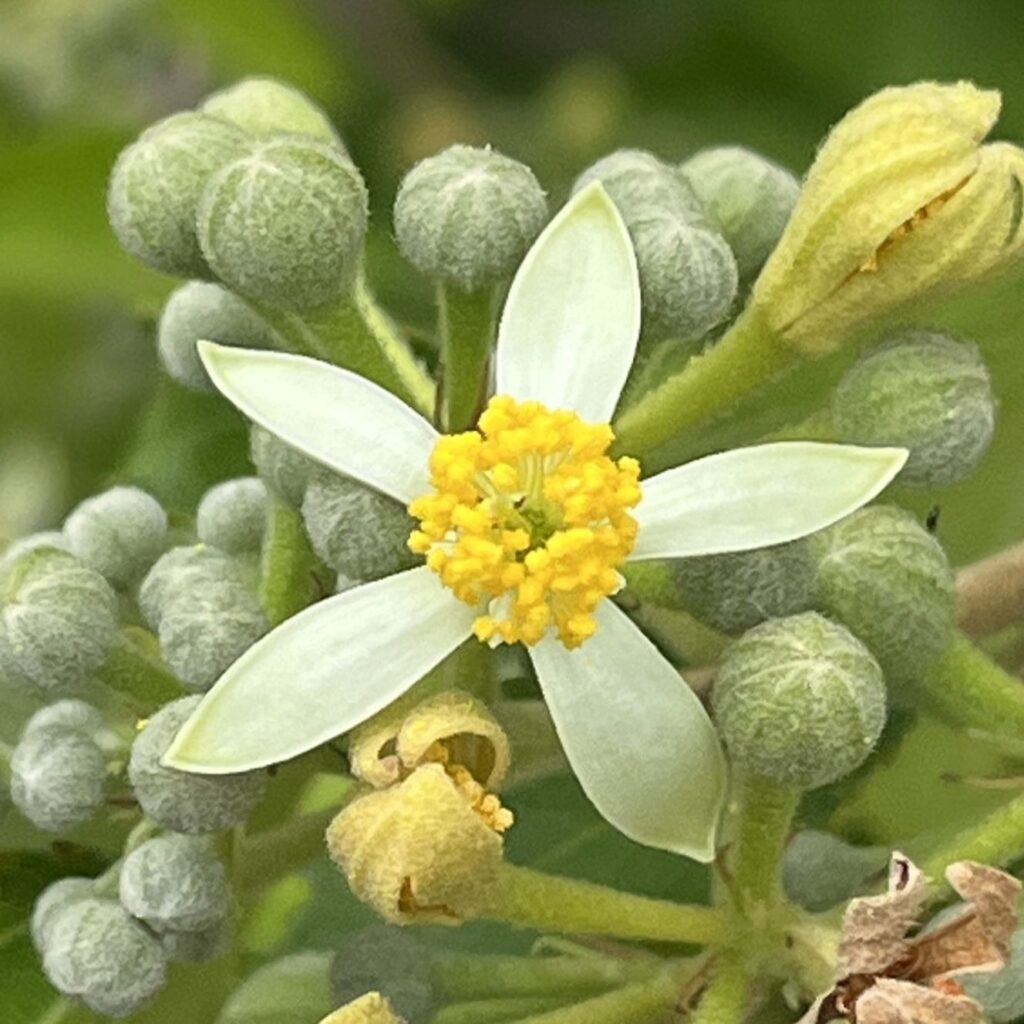
エノキウツギはアオイ科ウオトリギ属の落葉低木です。原産地は中国南部で、東アジア~東南アジアに分布。日本へは古くに渡来し、九州南部~南西諸島で野生化しました。分類は基本種「厚葉魚獲木」の変種。控えめながら、夏に白色の花が咲き、秋に赤色の実が成る美しい木です。
エノキウツギの名前
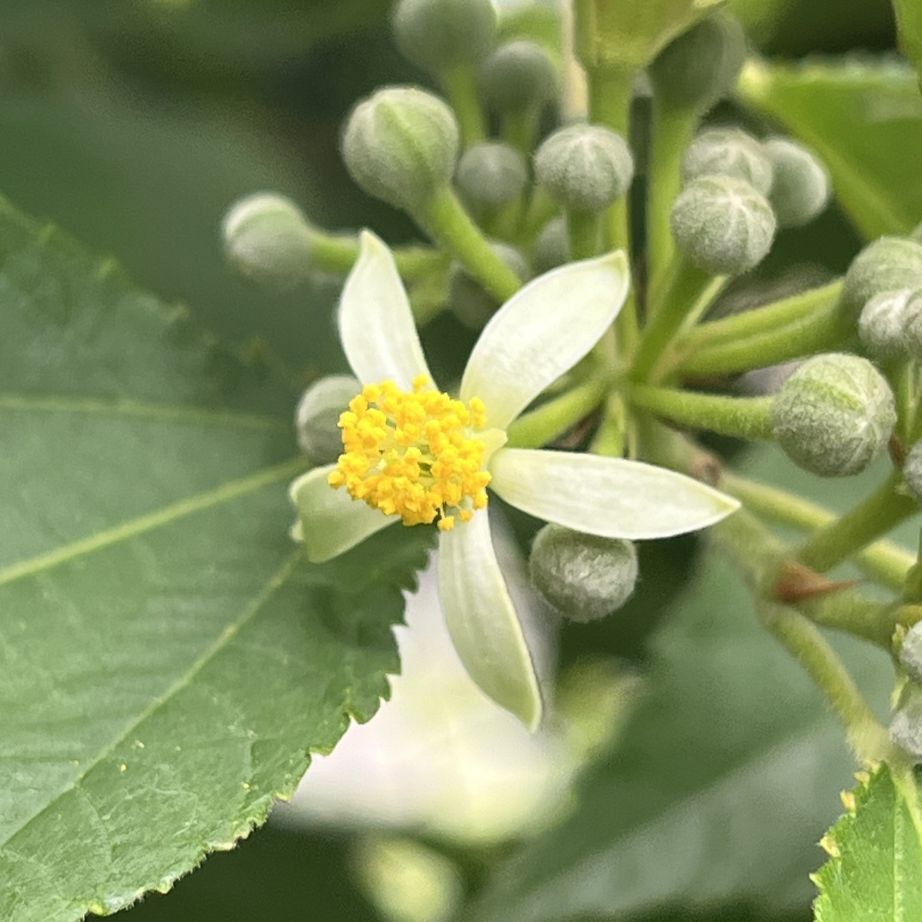
エノキウツギの和名の由来は葉の形がアサ科の「榎」に、樹の姿がアジサイ科の「卯木」に似ているからです。ラテン語の属名グレウィアは17~18世紀の英国の植物学者ネヘミア・グルーへの献名。種小名ビロバは「二裂の」、変種名パルビフローラは「花が小さい」という意味です。
エノキウツギの姿形
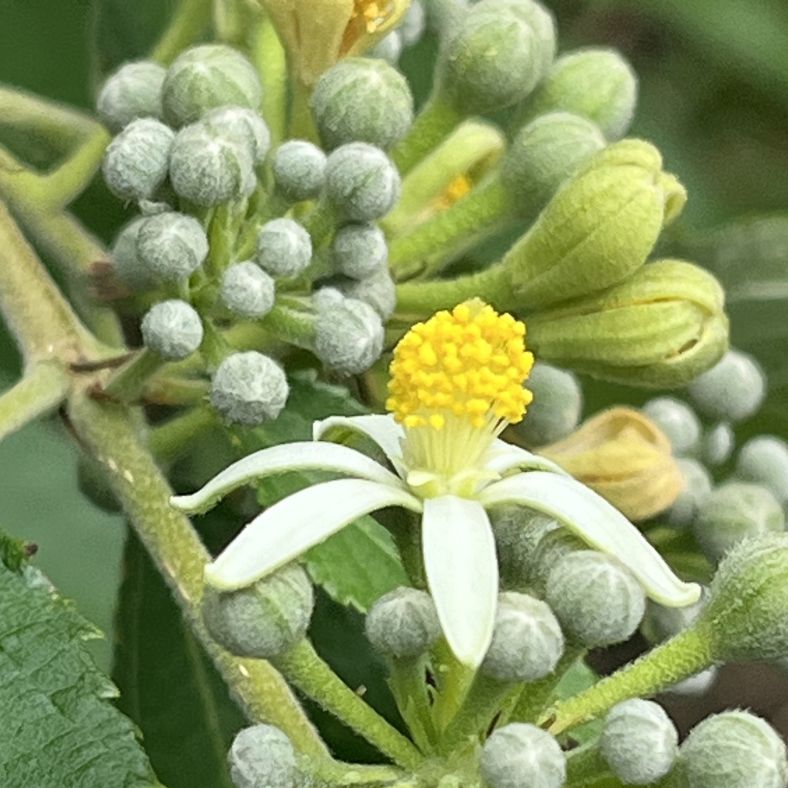
エノキウツギは根が浅く広がり、枝が盛んに分かれます。葉は先の尖った卵形で互生。縁に鋸歯があり、浅く裂けることもあります。花は花弁のように見える大きな萼片が5枚、目立たない小さな花弁が5枚、雄しべがたくさん。花後は瓢箪形の核果を結び、熟すと赤色に変わります。
エノキウツギの利用
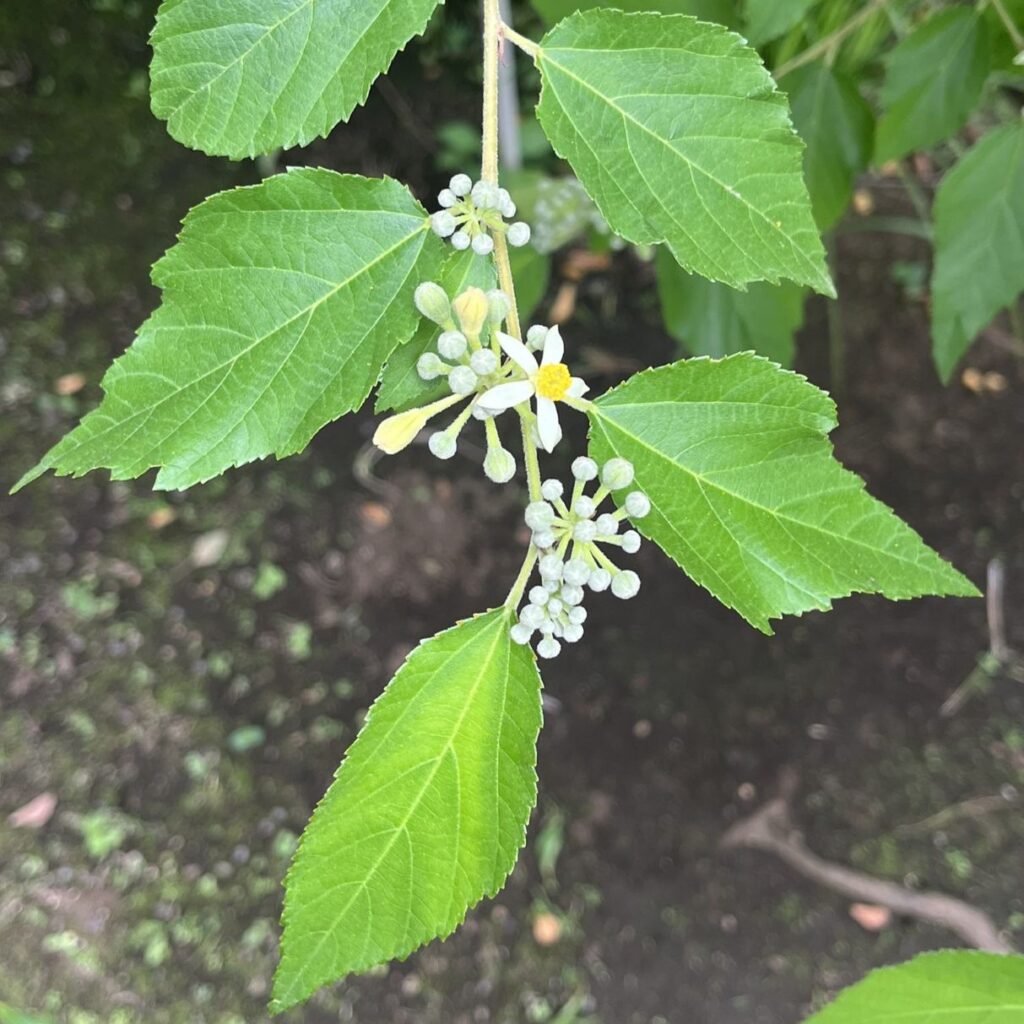
エノキウツギは人の薬や魚の毒に用いられました。生薬「溲疏」として、葉や果実を煎じ、むくみ、排尿障害、中毒、風邪などに服用、皮膚の炎症、湿疹などに外用。一方、「魚獲木」という別名の通り、樹液に魚を麻痺させる毒性があり、かつて川や池に流して漁に用いられました。
Bilobed Grewia
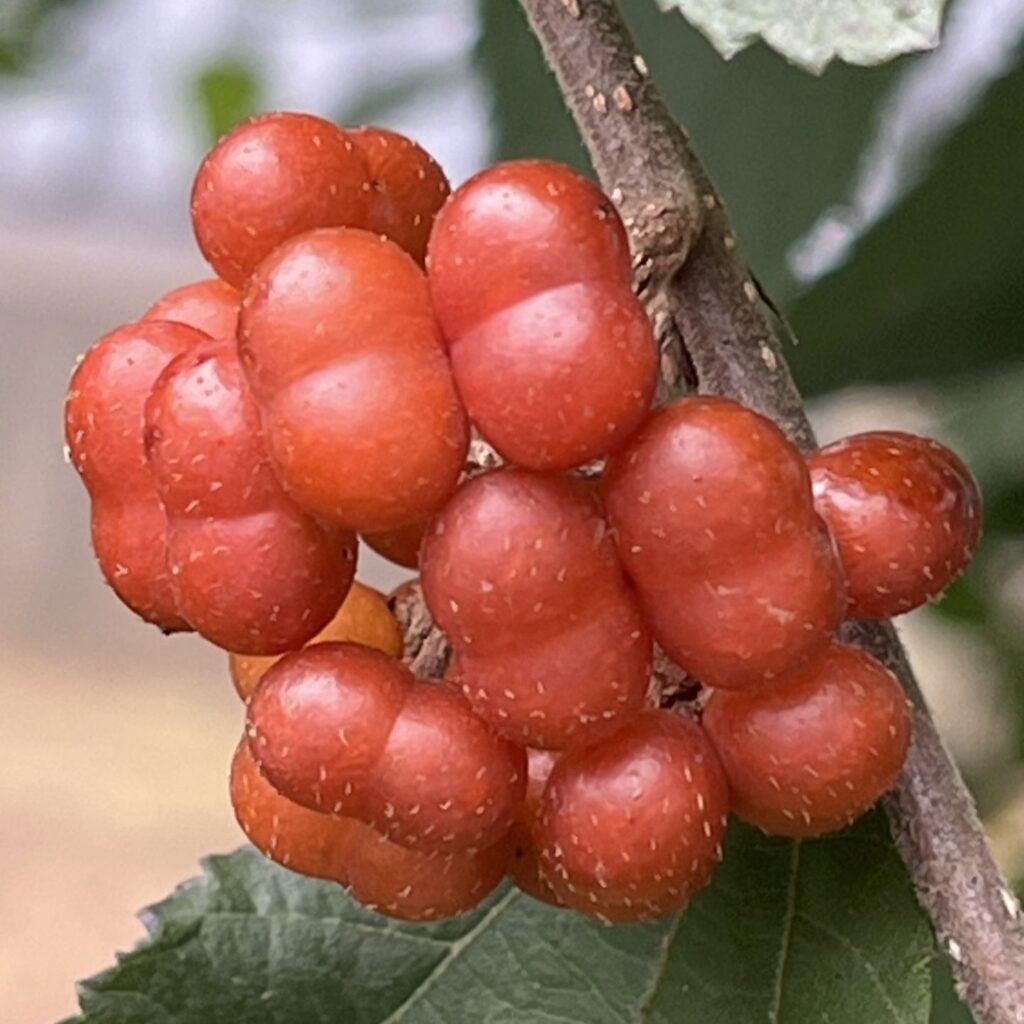
Bilobed Grewia is a deciduous shrub in the Malvaceae family. It is native to southern China and is distributed throughout East and Southeast Asia. It was introduced to Japan long ago and has become naturalized in southern Kyushu and the Ryukyu Islands. It is classified as a variant of the basic species, Grewia biloba. This beautiful tree blooms with modest white flowers in summer and red berries in autumn.
The Japanese name for Bilobed Grewia means “hackberry deutzia.” This comes from the leaf shape, which resembles a hackberry in the Cannabaceae family, and the tree’s shape, which resembles a deutzia in the Hydrangeaceae family. The Latin genus name Grewia honors the 17th-18th century English botanist Nehemiah Grew. The specific epithet biloba means “bilobed,” and the variety name parviflora means “small-flowered.”
Bilobed Grewia has shallow, spreading roots and vigorously branching branches. The leaves are alternate, ovate, with pointed tips. They may have serrated edges and shallow lobes. Flowers have five large, petal-like sepals, five smaller, less conspicuous petals, and numerous stamens. After flowering, the plant produces a gourd-shaped drupe that turns red when ripe.
Bilobed Grewia has been used in human medicine and as a fish poison. As a medicinal herb, the leaves and fruit are brewed and taken orally to treat swelling, urinary problems, poisoning, and colds, and externally for skin inflammation and eczema. On the other hand, the sap is toxic and paralyzes fish, so it was once released into rivers and ponds for fishing purposes.

